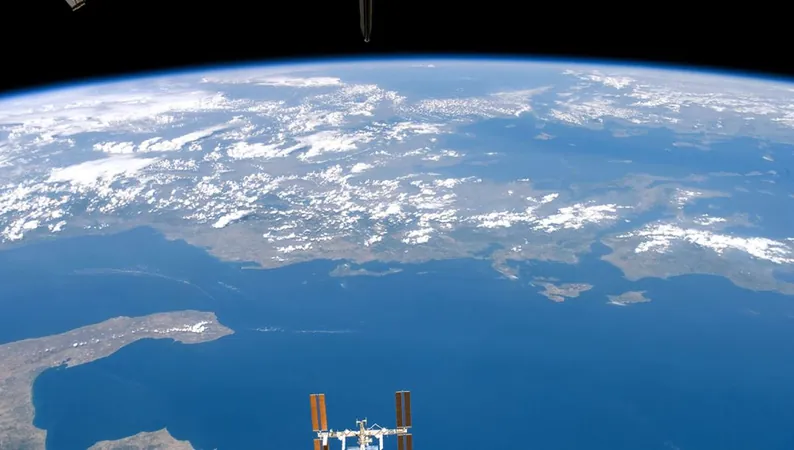
Australia: Earth's Fastest-Moving Continent! What's Next for This Shifting Landmass?
2025-04-04
Author: Kai
Australia: Earth's Fastest-Moving Continent!
Australia is not just known for its stunning landscapes and unique wildlife; it also holds the title of Earth's fastest-moving continent! According to the National Oceanic and Atmospheric Administration (NOAA), the average tectonic plates on our planet drift at about 1.5 centimeters (0.6 inches) per year. But Australia leads the pack in this geological race, as it continues its journey northward.
The Indo-Australian Plate
This movement isn't just a casual stroll; it's driven by the Indo-Australian Plate, which encompasses mainland Australia, Tasmania, parts of New Guinea, New Zealand, and even stretches into the Indian Ocean basin. But where is it all heading? Speculation suggests that in tens of millions of years, the Indo-Australian Plate may collide with the Eurasian Plate near Southeast Asia and China, potentially forming a new continental entity dubbed “Austrasia.”
Historical Context
Historically, Australia was once part of the supercontinent Gondwana that existed over 200 million years ago. At that time, Australia was connected to several other landmasses, including parts of Africa, Antarctica, and South America, creating a vast southern land. In contrast, Laurasia, which included most of today's Europe, Asia, and North America, was located in the Northern Hemisphere.
The Constant Motion of Continents
While we go about our daily lives, it’s essential to remember that the Earth's continents are in a constant state of slow motion. The surface of our planet may seem solid, but it is more akin to a cracked road on a conveyor belt, with tectonic plates gradually shifting, colliding, or drifting apart over time. This ongoing movement might be imperceptible in the short term, but it has significant implications for our environment and technology.
Implications for Navigation Technology
Interestingly, this slow drift can lead to confusion for our navigation technology. Systems like GPS, GLONASS, Galileo, and BeiDou rely on fixed reference points to determine locations. However, as the continents shift beneath them, discrepancies arise between where maps indicate locations are and their actual positions. This means that over time, our navigation tools could lead us astray if not regularly updated to account for these tectonic shifts.
Looking to the Future
So, as we admire Australia's unique ecosystems and vibrant cities, let’s also keep an eye on its incredible journey across the globe—who knows what the future holds for this ever-moving continent!

 Brasil (PT)
Brasil (PT)
 Canada (EN)
Canada (EN)
 Chile (ES)
Chile (ES)
 Česko (CS)
Česko (CS)
 대한민국 (KO)
대한민국 (KO)
 España (ES)
España (ES)
 France (FR)
France (FR)
 Hong Kong (EN)
Hong Kong (EN)
 Italia (IT)
Italia (IT)
 日本 (JA)
日本 (JA)
 Magyarország (HU)
Magyarország (HU)
 Norge (NO)
Norge (NO)
 Polska (PL)
Polska (PL)
 Schweiz (DE)
Schweiz (DE)
 Singapore (EN)
Singapore (EN)
 Sverige (SV)
Sverige (SV)
 Suomi (FI)
Suomi (FI)
 Türkiye (TR)
Türkiye (TR)
 الإمارات العربية المتحدة (AR)
الإمارات العربية المتحدة (AR)